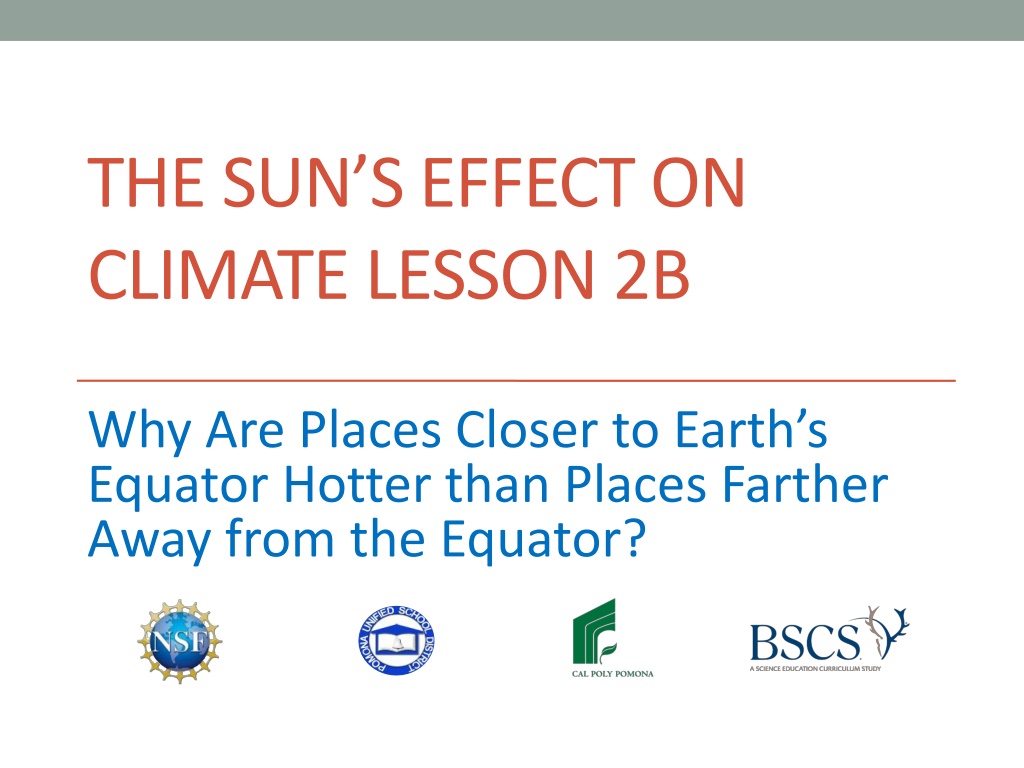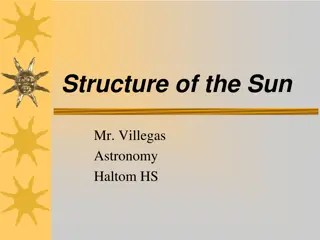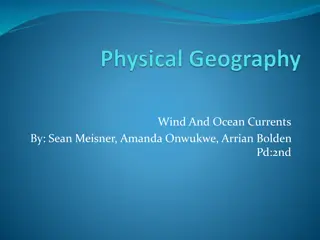Understanding the Sun's Influence on Climate Patterns
Exploring why places near the Earth's equator are hotter than those farther away, this lesson delves into the impact of solar radiation and the angle of sunlight on Earth's surface. Through activities like counting rays of sunlight, students uncover how the distribution of solar energy varies at different latitudes, shaping global temperature disparities. By grasping these concepts, learners gain insights into the fundamental mechanisms driving climate variations across the planet.
Download Presentation

Please find below an Image/Link to download the presentation.
The content on the website is provided AS IS for your information and personal use only. It may not be sold, licensed, or shared on other websites without obtaining consent from the author. Download presentation by click this link. If you encounter any issues during the download, it is possible that the publisher has removed the file from their server.
E N D
Presentation Transcript
THE SUNS EFFECT ON CLIMATE LESSON 2B Why Are Places Closer to Earth s Equator Hotter than Places Farther Away from the Equator?
Key Science Idea Sunlight shines more directly at the equator and is more spread out moving toward the poles. That s why temperatures are warmer closer to the equator and are cooler closer to the poles. What evidence from yesterday s investigations can we use to explain this science idea? Hint: Think about the data from our tray-and- flashlight activity.
Lesson Focus Question Why are places closer to Earth s equator hotter than places farther away from the equator?
Key Science Ideas The lines in our diagram represent the Sun s rays, or light energy, striking Earth s surface. Another term for the Sun s light energy is solar radiation. Solar radiation provides Earth with light energy to heat the planet and maintain temperatures so we can survive.
Angles of Light Energy and Solar Radiation How do angles of light energy and Earth s curved surface affect the amount of solar radiation (the number of light rays) hitting different locations (latitudes) on Earth? Let s find out!
Counting Rays of Sunlight 1. Count the number of lines (rays of sunlight) hitting Earth s surface at these latitudes on your handout: 0 15 N 0 15 S 45 60 N 45 60 S 2. Write the number of lines for these latitudes on the handout (the bottom right-hand corner). 3. Don t stop there! Count as many rays of sunlight in other latitude segments as you can and record these numbers on your handout as well.
Counting Rays of Sunlight Is it really possible to count the number of light rays hitting Earth s surface? Of course not! But models like this help us see how Earth s curved shape changes the angle of sunlight hitting the surface at different latitudes. This explains why temperatures are warmer near the equator and cooler near the poles.
Patterns in the Data What patterns did you find in your data? Where on Earth is the Sun s light energy more concentrated? What is your evidence? Where is the Sun s light energy more spread out? What is your evidence? What do you think these patterns have to do with temperatures near the equator and farther away?
Todays Focus Question Why are places closer to Earth s equator hotter than places farther away from the equator?
Why Is It Hotter Near the Equator? 1. Think about all the data you ve gathered about angles of light energy from our investigations . 2. Talk with your partner about this data and come up with the best answer to our focus question, Why are places closer to Earth s equator hotter than places farther away from the equator? Words list: Angle of sunlight Light energy/solar radiation Equator and poles More direct/less direct Curved surface of Earth More/less concentrated Warmer and cooler Latitude
Lets Summarize! Key science ideas: 1. When sunlight strikes Earth s surface more directly near the equator, the light energy, or solar radiation, is more intense and concentrated, making the surface warmer. 2. When sunlight strikes Earth s surface at a less direct angle moving toward the poles, the light energy, or solar radiation, is less concentrated, and the surface doesn t warm up as much.
Its Your Turn! To summarize what you ve learned so far, write in your own words a description of how the Sun s light energy hits Earth s surface and how this affects temperatures in different locations. Record your ideas in your science notebook and draw a picture to illustrate them.
Next Time Today we learned how the angle of sunlight hitting Earth s surface at different latitudes affects temperatures. The equator receives more direct sunlight than anywhere else on Earth, so now we know why it s hotter near the equator than it is farther away! Tomorrow we ll talk about why temperatures are different in the Northern and Southern Hemispheres at the same time of year.























